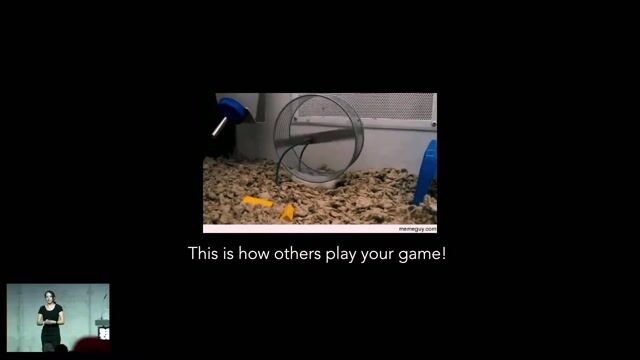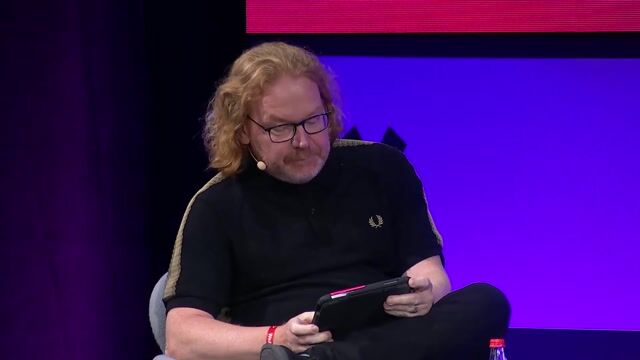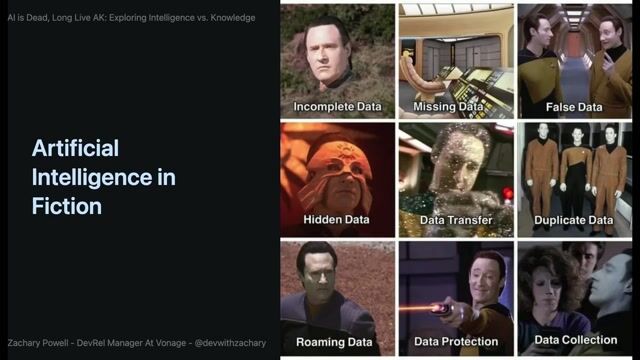John Romero
What AI Can, Can’t, and Shouldn’t do for Games
#1about 2 minutes
Defining generative AI and its impact on technology
Generative AI is the most significant technological change since the internet, designed to create new content like text and images.
#2about 4 minutes
How game development studios are adopting generative AI
A GDC survey reveals that nearly half of game studios use generative AI, though many AAA studios prohibit it due to ethical concerns.
#3about 7 minutes
Exploring traditional AI techniques used in classic games
Games have long used custom-built AI like pathfinding, state machines, and behavior trees to create dynamic NPC and enemy behaviors.
#4about 6 minutes
Why AI struggles with true creative innovation
AI is inherently derivative and cannot replicate the unique combination of people, timing, and vision that leads to groundbreaking games like Doom.
#5about 2 minutes
Navigating the legal and ethical risks of AI
Using generative AI for creative work introduces significant copyright and intellectual property risks because AI-generated art is not human-authored.
#6about 1 minute
The future of AI as a powerful creative tool
AI will be an exceptional tool for processing data and augmenting work, but human creativity will remain essential for creating the next generation of hit games.
Related jobs
Jobs that call for the skills explored in this talk.
Wilken GmbH
Ulm, Germany
Senior
Kubernetes
AI Frameworks
+3
ROSEN Technology and Research Center GmbH
Osnabrück, Germany
Senior
TypeScript
React
+3
Matching moments

03:13 MIN
How AI can create more human moments in HR
The Future of HR Lies in AND – Not in OR

06:04 MIN
The importance of a fighting spirit to avoid complacency
The Future of HR Lies in AND – Not in OR

06:10 MIN
Understanding global differences in work culture and motivation
The Future of HR Lies in AND – Not in OR

03:28 MIN
Shifting from talent acquisition to talent architecture
The Future of HR Lies in AND – Not in OR

04:22 MIN
Navigating ambiguity as a core HR competency
The Future of HR Lies in AND – Not in OR

06:59 MIN
Moving from 'or' to 'and' thinking in HR strategy
The Future of HR Lies in AND – Not in OR

05:10 MIN
How the HR function has evolved over three decades
The Future of HR Lies in AND – Not in OR

06:51 MIN
Balancing business, technology, and people for holistic success
The Future of HR Lies in AND – Not in OR
Featured Partners
Related Videos
 31:15
31:15How AI is shaping our games
Johanna Pirker
 47:36
47:36A Lifetime in Games: The Past, Present and Future of the Industry
John Romero
 33:09
33:09Fireside Chat with Warren Spector & John Romero
John Romero, Christian Heilmann & Warren Spector
 29:37
29:3730 Years of Rip and Tear: Doom’s development story
John Romero
 17:31
17:31Outsmarting the System: What Game Cheaters Can Teach Us About Cyber Security
John Romero
 29:27
29:27The Future Past of Technology - A Game Developers POV
Johanna Pirker
 22:08
22:08AI is dead, long live AK
Zachary Powell
 44:49
44:49Wolfenstein 3D Postmortem
John Romero
Related Articles
View all articles



From learning to earning
Jobs that call for the skills explored in this talk.

Generative Ai Engineer83zero Limited
Glasgow, United Kingdom
£80-88K
GIT
Azure
NoSQL
React
+16

Conrad Electronic SE
Hirschau, Germany
Azure
Python
Google Cloud Platform

University of the Arts, London
Sleaford, United Kingdom
£34-41K
Python
PyTorch
TensorFlow

RE-INvent Retail GmbH
Azure
Python
Microservices
Google Cloud Platform
![AI Programmer"}}]},{"@context":"https://schema.org/","@type":"JobPosting","@id":"#jobPosting","title":"Senior AI Programmer](https://wearedevelopers.imgix.net/public/default-job-listing-cover.png?w=400&ar=3.55&fit=crop&crop=entropy&auto=compress,format)
Pcfs
Remote
Senior
C++
XML
GIT
.NET
+2



NeuralAI
Amsterdam, Netherlands
Remote
€5-11K
Senior
API
C++
DirectX
+3
